Svarog: God Of Cosmic Fire And Ruler Of The Sky In Pre-Christian Slavic Pantheon
Angela Sutherland - AncientPages.com - Svarog (Swarog ) is one of the most important deities in the Slavic pantheon. He is the Slavic god of celestial fire and patron of blacksmiths.
Svarog by Andrey Shishkin. Image credit: Andrey Shishkin - CC BY
He is the Supreme Heavenly God who always sleeps, and yet, he controls the flow of Life and Universal Order and governs the World of Yav, the 4-dimensional realm of physical beings. He entrusted this world to Perun, God of Heaven and Lightning.
One day - according to the beliefs - when Svarog wakes up, it will end the world. Svarog is a ruler of the sky, fire and is associated with the Sun.
Ancient Slavs worshiped Svarog as the god of the sky (heaven), and a guard of the cosmic fire represented by the Sun. The root of his name ("svar" means bright, clear) is related to the Sanskrit word "swar" (sun, glow, sky). A long-lasting and respectable habit of bowing and praying to the rising Sun was still widespread after Christianization was introduced in the Slavic countries.
In many Slavonic countries, rural folk still preserve deep respect for fire, which has always had a sacred character among those who addressed prayers to fire. For example, the old forbade the young to swear or shout when a fire was lit in the house.
Some old myths confirm that Svarog transmitted his creative sovereign power to his children, and a Byzantine chronicler, John Malala (490-565), summarized the cosmogony of the Slavic pagans in these terms:
Svarog, a ruler of the sky, fire, associated with the sun in Slavic beliefs. Image source
'After Svarog reigned his son, named Sun, who was also called Dazhbog. The Sun is the king and son of Svarog; he is named Dazhbog, for he was a mighty lord.' The other son of Svarog, Fire (or "ogon," which can be compared to the Sanskrit Agni), is mentioned in ancient work entitled 'Unknown Admirer of Christ.'
Svarog was also considered the guardian of the Slavic home fire and the sacrificial fire, associated with other gods such as Perun and Weles. As a divine blacksmith, Svarog throws lightning bolts and helps Perun to fight his antagonist, Weles.
According to Bruno of Querfurt (c. 974 – 1009 AD), a sainted missionary bishop and martyr, who was beheaded near the border of Kievan Rus and Lithuania while trying to spread Christianity in Eastern Europe, Svarog was widely worshiped in the region of the pre-Christian Slavs.
Special priests performed a divination in a hidden temple surrounded by sacred forests and cared for the sacred horse. They had a tradition of human sacrifices that usually took the form of beheading, which may suggest that sacrificial blood was apparently of importance. One of their victims was the Bishop of Mecklenburg on Jan. 10, who died in martyrdom. Another chronicler also confirmed the Svarog cult, Adam of Bremen, who lived in the second half of the 11th century.
Known under different names, Svarog has also been sometimes identified with Hephaestus, the god of fire and blacksmith, one of the 12 Olympian Gods, a mechanical engineer, a god of metallurgy, and a craftsman. However, to what extent the Greeks gods were thought to resemble their Slavic counterparts is uncertain.
Regarding the mighty god Svarog, identifying this mythological figure has always been a problem. His name is mentioned in many old writings but without references to his activities. To talk about Svarog means to rely on various tales and songs about him, but these sources cannot be verified.
Written by – A. Sutherland AncientPages.com Staff Writer
Updated on November 25, 2023
Copyright © AncientPages.com All rights reserved. This material may not be published, broadcast, rewritten or redistributed in whole or part without the express written permission of AncientPages.com
Expand for referencesReferences:
Christensen, Hammer Warburton, The Handbook of Religions in Ancient Europe
Curta F. Holt A., Great Events in Religion
Andrén, Jennbert, Raudvere, Old Norse religion in long-term perspectives
More From Ancient Pages
-
 Remains of Maurya-Era Wall Discovered In Tilaurakot, Kapilvastu, Nepal
Archaeology | Jun 16, 2022
Remains of Maurya-Era Wall Discovered In Tilaurakot, Kapilvastu, Nepal
Archaeology | Jun 16, 2022 -
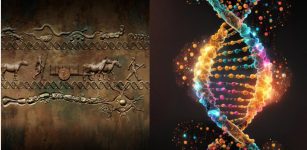 Ancient DNA Reveals How Yamnaya People Re-Wrote Northern Europeans’ Genetic Story 5,000 Years Ago
DNA | Jan 12, 2024
Ancient DNA Reveals How Yamnaya People Re-Wrote Northern Europeans’ Genetic Story 5,000 Years Ago
DNA | Jan 12, 2024 -
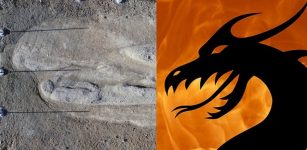 Ancient Dragon Stone That Inspired Legends Discovered In Turkey
Archaeology | Dec 12, 2018
Ancient Dragon Stone That Inspired Legends Discovered In Turkey
Archaeology | Dec 12, 2018 -
 Mysterious Ancient Underground King And Ruler Of The World – Secret Science – Part 2
Ancient Mysteries | Jul 26, 2018
Mysterious Ancient Underground King And Ruler Of The World – Secret Science – Part 2
Ancient Mysteries | Jul 26, 2018 -
 Ancient Monuments The World Is Not Allowed To See – Forbidden Zone – Part 2
Ancient Mysteries | Aug 27, 2020
Ancient Monuments The World Is Not Allowed To See – Forbidden Zone – Part 2
Ancient Mysteries | Aug 27, 2020 -
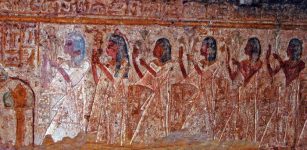 Rock-Cut Tomb Of Pennut, Viceroy Of Nubia Under Reign Of Ramses VI
Civilizations | Dec 7, 2018
Rock-Cut Tomb Of Pennut, Viceroy Of Nubia Under Reign Of Ramses VI
Civilizations | Dec 7, 2018 -
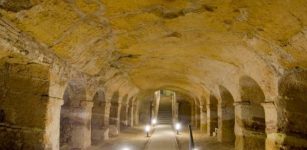 Mysterious Camerano Underground City – Secret Meeting Place For Knights Templar?
Featured Stories | Dec 13, 2017
Mysterious Camerano Underground City – Secret Meeting Place For Knights Templar?
Featured Stories | Dec 13, 2017 -
 Mysterious Kola Pyramids Built By An Unknown Lost Ancient Civilization Can Rewrite Ancient History
Civilizations | Aug 3, 2020
Mysterious Kola Pyramids Built By An Unknown Lost Ancient Civilization Can Rewrite Ancient History
Civilizations | Aug 3, 2020 -
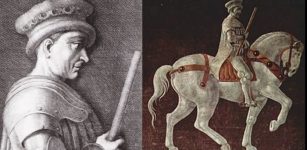 John Hawkwood ‘John Sharp’: Feared, English Mercenary And His White Company In 14th Century Italy
Featured Stories | Jun 20, 2020
John Hawkwood ‘John Sharp’: Feared, English Mercenary And His White Company In 14th Century Italy
Featured Stories | Jun 20, 2020 -
 Ice Age Cycles Played A Key Role In Early Human Interbreeding
DNA | Oct 19, 2023
Ice Age Cycles Played A Key Role In Early Human Interbreeding
DNA | Oct 19, 2023 -
 First Kisses May Have Helped Spread Oral Herpes 5,000 Years Ago – Scientists Say
Archaeology | Jul 30, 2022
First Kisses May Have Helped Spread Oral Herpes 5,000 Years Ago – Scientists Say
Archaeology | Jul 30, 2022 -
 Evidence Of Advanced Military Robots In The Ancient World – Unknown High-Tech Examined
Ancient Mysteries | Jan 13, 2021
Evidence Of Advanced Military Robots In The Ancient World – Unknown High-Tech Examined
Ancient Mysteries | Jan 13, 2021 -
 Ancient Irish Practiced Special Burial Rituals Such As Dismemberment Of Bodies
Archaeology | Sep 18, 2017
Ancient Irish Practiced Special Burial Rituals Such As Dismemberment Of Bodies
Archaeology | Sep 18, 2017 -
 Incredible Ancient Star Map Depicting Our Galaxy Is Hidden In Africa
Ancient Mysteries | Aug 4, 2018
Incredible Ancient Star Map Depicting Our Galaxy Is Hidden In Africa
Ancient Mysteries | Aug 4, 2018 -
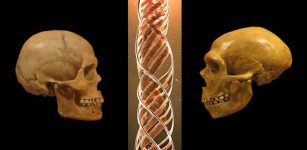 5 Surprising Things DNA Has Revealed About Our Ancestors
DNA | Sep 27, 2023
5 Surprising Things DNA Has Revealed About Our Ancestors
DNA | Sep 27, 2023 -
 ‘Flower Burial’ And Shanidar Cave With Neanderthal Remains Who Lived 70,000 Years Ago
Archaeology | Feb 19, 2020
‘Flower Burial’ And Shanidar Cave With Neanderthal Remains Who Lived 70,000 Years Ago
Archaeology | Feb 19, 2020 -
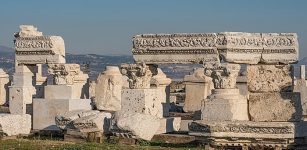 Ancient City Of Laodicea With One Of ‘Seven Churches Of Asia’ Founded By The King Antiochus II
Featured Stories | Jul 26, 2021
Ancient City Of Laodicea With One Of ‘Seven Churches Of Asia’ Founded By The King Antiochus II
Featured Stories | Jul 26, 2021 -
 A 19th-Century Sailing Ship Loaded With Champagne, Wine, Porcelain And Mineral Water Found At The Bottom Of The Baltic Sea
Underwater Discoveries | Jul 25, 2024
A 19th-Century Sailing Ship Loaded With Champagne, Wine, Porcelain And Mineral Water Found At The Bottom Of The Baltic Sea
Underwater Discoveries | Jul 25, 2024 -
 Lady Midday – ‘Poludnica’- An Evil, Elusive Female Field-Spirit In Slavic Beliefs That Comes To Kill At Noon
Featured Stories | Jan 7, 2019
Lady Midday – ‘Poludnica’- An Evil, Elusive Female Field-Spirit In Slavic Beliefs That Comes To Kill At Noon
Featured Stories | Jan 7, 2019 -
 Ancient Mystery Of The Oghars – An Unusual And Little-Known Lost Race
Ancient Mysteries | Mar 19, 2019
Ancient Mystery Of The Oghars – An Unusual And Little-Known Lost Race
Ancient Mysteries | Mar 19, 2019


